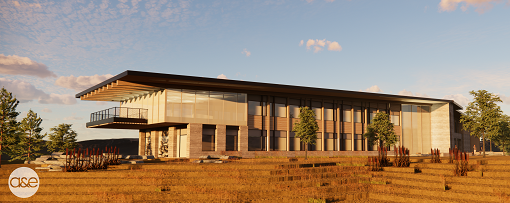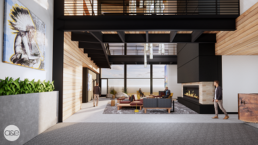
Kampgrounds of America (KOA) is celebrating 60 years in business by building a new corporate headquarters in Billings, Montana.
Construction of the new international headquarters in the West End Transtech Center has begun. An official groundbreaking ceremony will take place April 8, 2022. Completion of the building is projected in the first half of 2023.
The organization’s headquarters has been in Billings since 1962, when the first KOA campground opened on the banks of the Yellowstone River. The company now owns 525 locations. The current office houses about 90 employees.
“KOA has a long history and bright future in Billings,” KOA President and CEO Toby O’Rourke said. “Our new headquarters will not only be a celebration of KOA’s success, but also solidify our connection to the city, as we continue to grow our roots in a meaningful way.”
Designed by Billings-based architectural firm, A&E Design, the building will feature flexible workspaces, reconfigurable and demountable office walls, soft workspaces as well as intentional office placements. The building will be 35,000 square feet.

A raised floor system will enable KOA to easily reconfigure the building and meet future needs. Ventilation and climate control will be addressed throughout the building using energy modeling and daylighting software.
The new headquarters, inspired by KOA’s focus on connecting people to the outdoors, will reflect the surrounding landscape of rolling hills, rimrocks and grass plains, KOA stated.
Outside the building, KOA will install a seasonal “creek bed” to aid storm drainage and provide sustainable landscaping irrigation. Other exterior features will include an activity lawn, a large patio space with a fire pit and outdoor meeting spaces.
“Connection to nature has been a critical component of our new building design,” O’Rourke said. “We envision our new headquarters, not just as a space that produces good work, but also one that creates a work environment that promotes health and sustainability.”
KOA is seeking Leadership in Energy and Environmental Design (LEED) certification for the building through the U.S. Green Building Council. Qualifying for the certification requires architectural attention in five areas: sustainable sites, water efficiency, energy/atmosphere, materials/resources and indoor environmental quality.





